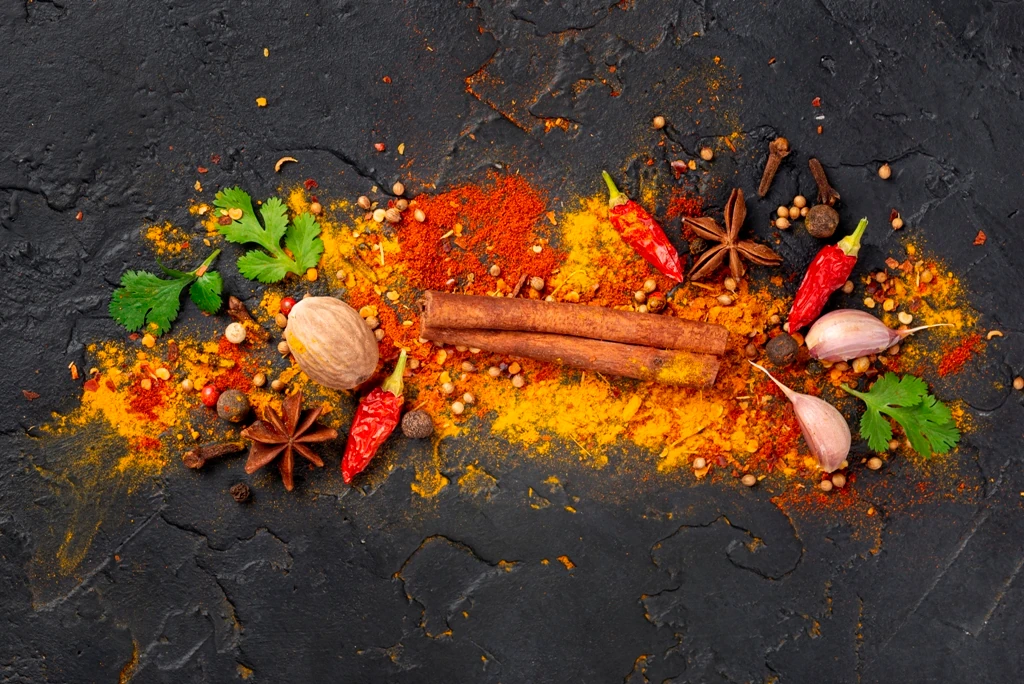Embarking on a global spice journey is a delightful way to elevate your dishes and infuse them with exotic flavors from around the world. Spices have been an integral part of culinary traditions for centuries, adding depth, complexity, and a touch of magic to various cuisines.
“Discover Exotic Spices: Elevate Your Recipes with Global Flavors! Simple Tips to Transform Your Dishes. Explore Indian, Middle Eastern, and More. Start Your Spice Journey Today!”

Here’s a guide to help you explore and incorporate exotic flavors into your cooking:
- Research and Familiarize Yourself: Begin by researching the spices commonly used in different cuisines. Look into regions like India, the Middle East, Southeast Asia, North Africa, and Latin America, as they are renowned for their diverse spice profiles.
- Start with the Basics: Before diving into the exotic, ensure you have a well-stocked spice cabinet with essentials like black pepper, cumin, coriander, cinnamon, nutmeg, and cloves. These will serve as the foundation for your spice journey.
- Explore Indian Spices: Indian cuisine is a treasure trove of spices. Experiment with garam masala (a blend of spices including cinnamon, cardamom, and cloves), turmeric, cumin, coriander, and fenugreek. These spices can transform your dishes with warm and aromatic notes.
- Discover Middle Eastern Flavors: Middle Eastern spices like za’atar, sumac, and baharat can add a tangy, earthy, and slightly smoky dimension to your dishes. Sumac is known for its citrusy profile, while za’atar offers a herbal and nutty essence.
- Embrace Southeast Asian Spices: The flavors of Southeast Asia are vibrant and bold. Experiment with lemongrass, galangal, kaffir lime leaves, and turmeric. These spices are often used in curries, soups, and stir-fries.
- Indulge in North African Spices: North African cuisine boasts spices like ras el hanout and harissa. Ras el hanout is a fragrant blend of spices including cinnamon, ginger, and cumin, while harissa is a fiery chili paste that can add heat and depth to your dishes.
- Incorporate Latin American Spices: Latin American cuisine is rich with spices like achiote, annatto, and chipotle. Achiote seeds impart a deep reddish hue and a mild peppery flavor, while chipotle adds smokiness and heat.
- Experiment with Fusion: Don’t be afraid to combine spices from different regions to create your own unique flavor profiles. For instance, a fusion of Indian and Middle Eastern spices can result in exciting new combinations.
- Balancing Act: While exploring spices, remember that balance is key. Start with small amounts and gradually increase until you achieve the desired flavor. Some spices can be overpowering, so exercise caution.
- Pairing with Ingredients: Consider the ingredients you’re using and how they complement specific spices. For example, earthy spices like cumin and paprika work well with hearty dishes, while citrusy spices like coriander and lemongrass enhance lighter fare.
- Enhance Different Culinary Techniques: Spices can be used in various ways – as dry rubs, marinades, pastes, or added directly to dishes. Toasting whole spices before grinding them can intensify their flavors.
- Document Your Journey: Keep a spice journal where you note down the combinations you’ve tried, what worked, and what didn’t. This will help you refine your understanding of flavor pairings.
- Learn from Experts: Take inspiration from cookbooks, online cooking classes, and even local culinary workshops that focus on specific spice-rich cuisines.
- Practice and Patience: Mastery comes with practice. Embrace the learning curve, and don’t be discouraged by initial setbacks.
Remember, the global spice journey is a lifelong exploration. Each spice tells a story of its region’s history, culture, and culinary traditions. As you experiment and become more comfortable with different spices, you’ll find that your dishes transform into unforgettable culinary experiences that reflect the diversity of our world’s flavors.
How to Sustainable Eating? Reducing Food Waste and Making Ethical Choices









